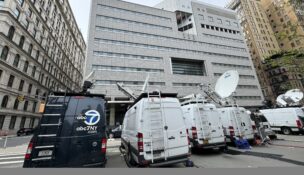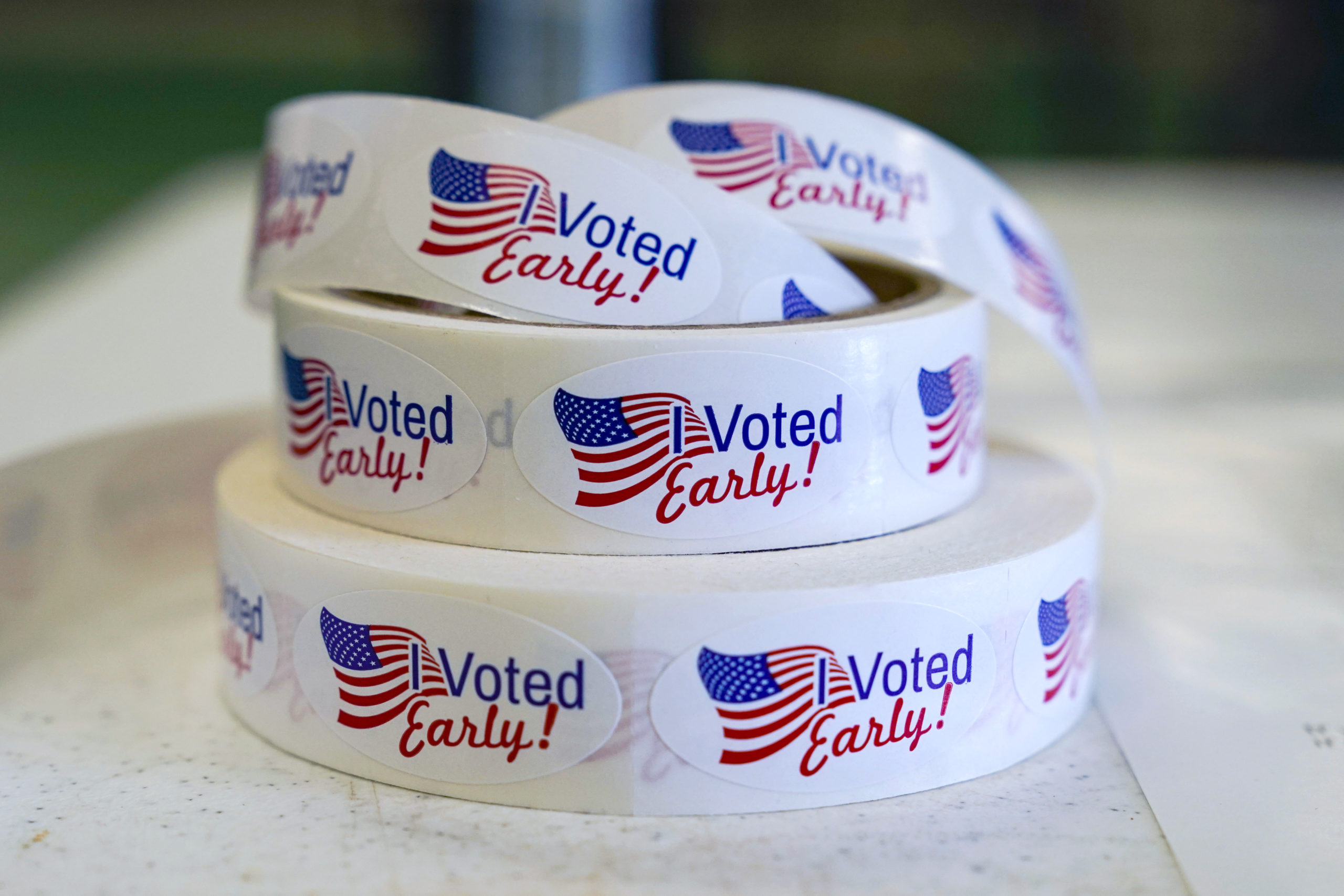High Court announces new Confrontation Clause
By: dmc-admin//March 17, 2004//
In 1603 Sir Walter Raleigh was tried and condemned to death for treason. A substantial part of the evidence against him was derived from a letter and unsworn out-of-court testimony attributed to an alleged accomplice, Lord Cobham. Raleigh demanded Cobham’s presence so that Raleigh could confront and cross-examine him. The judges refused.
More than 400 years later, Raleigh’s trial played a large part in a U. S. Supreme Court decision overturning a 24-year-old precedent and creating a new test for the Sixth Amendment’s Confrontation Clause. The case is Crawford v. Washington, 2004 WL 413301, decided March 8.
Michael Crawford stabbed Kenneth Lee, ostensibly during an argument over whether Lee had sexually assaulted Crawford’s wife, Sylvia. Police interviewed both Crawford and Sylvia. During the first interview, they seemed to corroborate each other’s story. However, when interviewed a second time and separately, Sylvia’s account differed on whether her husband had acted in self-defense in stabbing Lee.
Crawford was charged with assault and attempted murder. He invoked Washington state’s marital privilege, thereby preventing his wife from testifying at his trial.
The prosecution still was able to get the tape recorded second interview into evidence under an exception to the marital privilege which allowed a spouse’s out-of-court statements into evidence if the statements fell within a hearsay exception. The trial court ruled that the residual hearsay exception applied, namely, that the statement bore enough indicia of trustworthiness to be admitted notwithstanding that it did not fall within a specific hearsay exception. Crawford was convicted of assault while armed with a deadly weapon.
The Washington Court of Appeals reversed, holding that Sylvia’s statement was not reliable enough to be admissible. On the other hand, the Washington Supreme Court utilized the statement against penal interest exception to the hearsay rule and the fact that her statements were closely “interlocked” with her husband, the defendant’s, statements. The Washington high court cited to Ohio v. Roberts, 448 U. S. 56, 66 (1980), which held that the Confrontation Clause is satisfied if: 1) the witness is unavailable, and 2) the witness’s hearsay statement bears “particularized guarantees of trustworthiness” or falls within a “firmly rooted hearsay exception.” The court admitted the statement and affirmed the conviction.
The United States Supreme Court reversed. Justice Antonin Scalia, writing for a divided (7-2) court, held that Sylvia’s statement was not properly admitted into evidence. He announced a new Confrontation Clause rule, consistent with the “Framers’ understanding: Testimonial statements of witnesses absent from trial have been admitted only where the declarant is unavailable, and only where the defendant has had a prior opportunity to cross-examine.” (Emphasis added.) Chief Justice William Rehnquist and Justice Sandra Day O’Connor concurred in the judgment, but dissented from the new rule.
|
What the court held Case: Crawford v. Washington, No. 02-9410 Issue: Does admission of testimonial hearsay statements by unavailable witnesses violate the Confrontation Clause, if there was no prior opportunity for cross-examination? Holding: Yes. Where testimonial statements are at issue, the only indicium of reliability sufficient to satisfy constitutional demands is the opportunity for cross-examination. |
Scalia began by tracing the historical development of the Confrontation Clause. He particularly emphasized the Sir Walter Raleigh trial as a prime example of the denial of the right to confront one’s accusers. Raleigh’s case, among others, led to reforms where a witness could be declared “unavailable” only if “demonstrably unable to testify in person.” Raleigh’s case also involved another abuse of court procedure, namely, the practice of reading ex parte examinations in court as evidence. Scalia had problems with admitting such ex parte evidence even when a hearsay exception could be identified.
He commented, “Leaving the regulation of out-of-court statements to the law of evidence would render the Confrontation Clause powerless to prevent even the most flagrant inquisitorial practices. Raleigh was, after all, perfectly free to confront those who read Cobham’s confession in court.”
Scalia pointed out that it made no difference if the out-of-court “testimony” offered without the presence of the declarant was under oath or not. Cobham’s confession was not a sworn statement; indeed, his statement closely resembled “[s]tatements taken by police officers in the course of interrogations.” Accordingly, Scalia ruled that statements given to police during questioning are testimonial for Confrontation Clause purposes.
Scalia was adamant that a judge should not determine whether testimonial evidence should be admitted based on “reliability.” The majority opinion then proceeded to overturn the Roberts decision. Scalia wrote, “The Roberts test allows a jury to hear evidence, untested by the adversary process, based on a mere judicial determination of reliability.” Returning to Raleigh, Scalia opined that “the Raleigh trial itself involved the very sorts of reliability determinations that Roberts authorizes.
In the face of Raleigh’s repeated demands for confrontation, the prosecution responded with many of the arguments a court applying Roberts might invoke today: that Cobham’s statements were self-inculpatory, …that they were not made in the heat of passion…and that they were not ‘extracted from [him] upon any hopes or promise of Pardon.”
Scalia used a Wisconsin case as an example of how “[r]eliability is an amorphous, if not entirely subjective, concept.” In State v. Bintz, 2002 WI App 204, para. 13, the court “found a statement more reliable because the witness was not in custody and not a suspect.” (Emphasis in original.) He contrasted Bintz with a Virginia case that went the opposite route and “found a statement more reliable because the w
itness was in custody and charged with a crime (thus making the statement more obviously against her penal interest).”
Scalia criticized the Virginia case in particular: “To add insult to injury, some of the courts that admit untested testimonial statements find reliability in the very factors that make the statements testimonial. As noted earlier, one court relied on the fact that the witness’s statement was made to police while in custody on pending charges… .” (Emphasis in original.)
Turning to Sylvia Crawford’s “testimony” or statements to police, Scalia pointed out that the judicial uncertainty as to the “reliability” of her statements amply demonstrated the need to abandon the “reliability” portion of the Roberts test. (Recall that the trial court and Supreme Court found her statements “reliable” and admissible for different reasons, whereas the court of appeals found her statements unreliable.) Scalia added that “no doubt the courts below were acting in utmost good faith when they found reliability. The Framers, however, would not have been content to indulge this assumption. They knew that judges, like other government officials, could not always be trusted to safeguard the rights of the people. …”
Scalia conceded that the court simply could have reversed by agreeing that Sylvia’s testimony was unreliable and left it at that, instead of overruling Roberts. Instead, he invoked Raleigh’s case once more: “Vague standards are manipulable, and, while that might be a small concern in run-of-the-mill assault prosecutions like this one, the Framers had an eye toward politically charged cases like Raleigh’s — great state trials where the impartiality of even those at the highest levels of the judiciary might not be so clear.”
The majority opinion concluded that its decision only applied to testimonial evidence. “[A]t a minimum,” the term “testimonial” meant “prior testimony at a preliminary hearing, before a grand jury, or at a former trial; and to police interrogations.”
The majority implied that some out-of-court statements might yet be admissible even though the declarant was unavailable, provided the statements were not “testimonial” in nature. In his opinion concurring in the judgment, Rehnquist takes this to mean hearsay exceptions such as “business records and official records.”
The Chief Justice opined that “[t]o hold otherwise would require numerous additional witnesses without any apparent gain in the truth-seeking process.”
The Crawford decision will impact Wisconsin because the Wisconsin Supreme Court has utilized the Roberts test. State v. Stuart, 2003 WI 73, para. 33; State v. Weed, 2003 WI 85, para. 23. In the Weed case, the murder victim’s statement might now be inadmissible under the new Crawford test because it had not been subject to prior cross examination. That is, unless the victim’s statement was not deemed to be “testimonial.”
The decision raises an interesting question. If a hypothetical murder victim makes a dying declaration to police, is it “testimonial” because the police are questioning the victim, whereas the same declaration is not “testimonial” if made to a friend? Rehnquist lamented in Crawford, “But the thousands of federal prosecutors and the tens of thousands of state prosecutors need answers as to what beyond the specific kinds of ‘testimony’ the court lists…is covered by the new rule. They need them now, not months or years from now.”
| |
||
|
Links Related Article |
||
| |
||
The Stuart case illustrates a more problematic situation. In Stuart, the state sought to use the defendant’s brother’s preliminary hearing testimony against him at trial after the brother took the Fifth Amendment at trial (thereby making him “unavailable” as a witness). The Crawford decision clearly lists testimony at a preliminary hearing as falling within the purview of “testimonial” evidence. The defendant in Stuart was able to cross examine his brother at the preliminary hearing. That would seem to satisfy the Crawford test. However, at the preliminary hearing, the defendant’s ability to fully cross examine his brother was limited by a court ruling and the scope of testimony allowed at a preliminary hearing. 2003 WI 73, at para. 38-39. So, does the Crawford case allow evidence to come in from a preliminary hearing only as to that testimony upon which cross examination has been permitted or actually commenced?
The only viable solution, at least for now, may be found in Rehnquist’s reading of footnote 1 of the majority opinion, which Rehnquist interprets as an “implicit recognition that the mistaken application of its new rule by courts which guess wrong as to the scope of the rule is subject to harmless-error analysis.”
Scott Lewis, of the Racine city attorney’s office, is a former police legal advisor and former public defender.
In addition to his J. D., he holds a Masters of Science in Criminal Justice degree from the University of Alabama, Tuscaloosa.
Click here for Case Analysis.
Legal News
- History made in Trump New York trial opening statements
- Prosecutor won’t bring charges against Wisconsin lawmaker over fundraising scheme
- Republican Wisconsin Senate candidate says he doesn’t oppose elderly people voting
- Vice President Harris to reveal final rules mandating minimum standards for nursing home staffing
- Election workers fear threats to their safety as November nears
- Former law enforcement praise state’s response brief in Steven Avery case
- Eric Toney announces re-election bid for Fond du Lac County District Attorney
- Former Wisconsin Democratic Rep. Peter Barca announces new bid for Congress
- Republicans file lawsuit challenging Evers’s partial vetoes to literacy bill
- More human remains believed those of missing woman wash up on Milwaukee Co. beach
- Vice President Harris returning to Wisconsin for third visit this year
- Wisconsin joins Feds, dozens of states to hold airlines accountable for bad behavior
WLJ People
- Power 30 Personal Injury Attorneys – Russell Nicolet
- Power 30 Personal Injury Attorneys – Benjamin Nicolet
- Power 30 Personal Injury Attorneys – Dustin T. Woehl
- Power 30 Personal Injury Attorneys – Katherine Metzger
- Power 30 Personal Injury Attorneys – Joseph Ryan
- Power 30 Personal Injury Attorneys – James M. Ryan
- Power 30 Personal Injury Attorneys – Dana Wachs
- Power 30 Personal Injury Attorneys – Mark L. Thomsen
- Power 30 Personal Injury Attorneys – Matthew Lein
- Power 30 Personal Injury Attorneys – Jeffrey A. Pitman
- Power 30 Personal Injury Attorneys – William Pemberton
- Power 30 Personal Injury Attorneys – Howard S. Sicula











